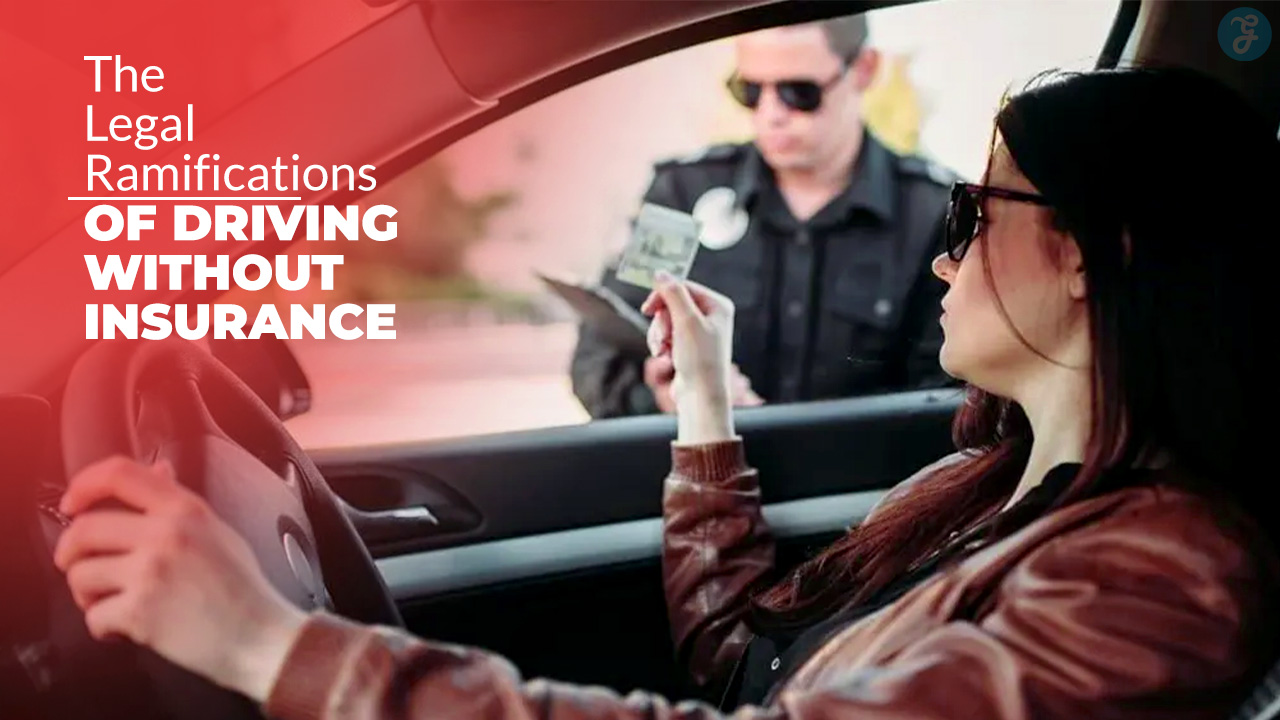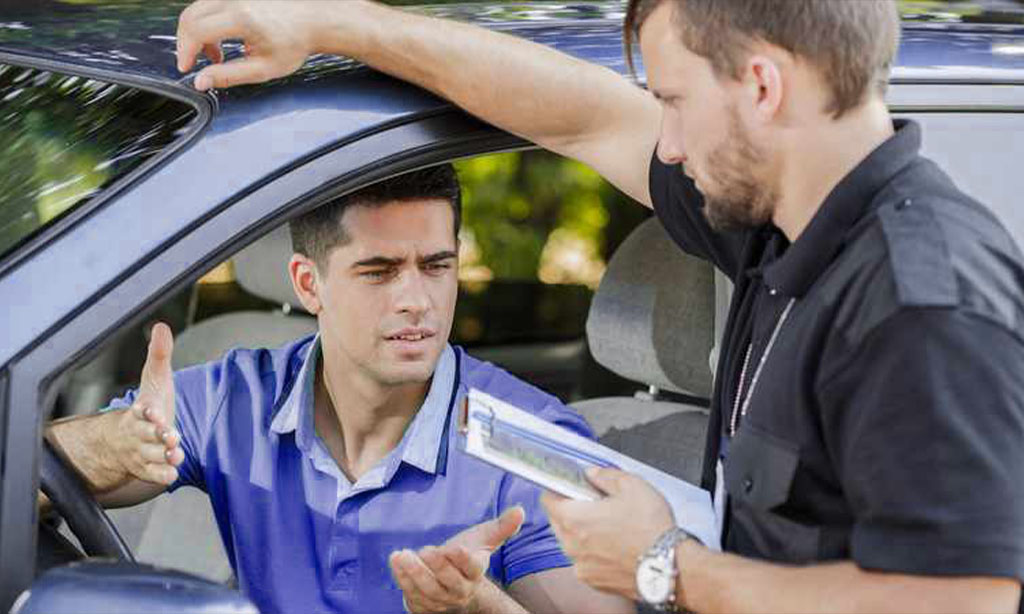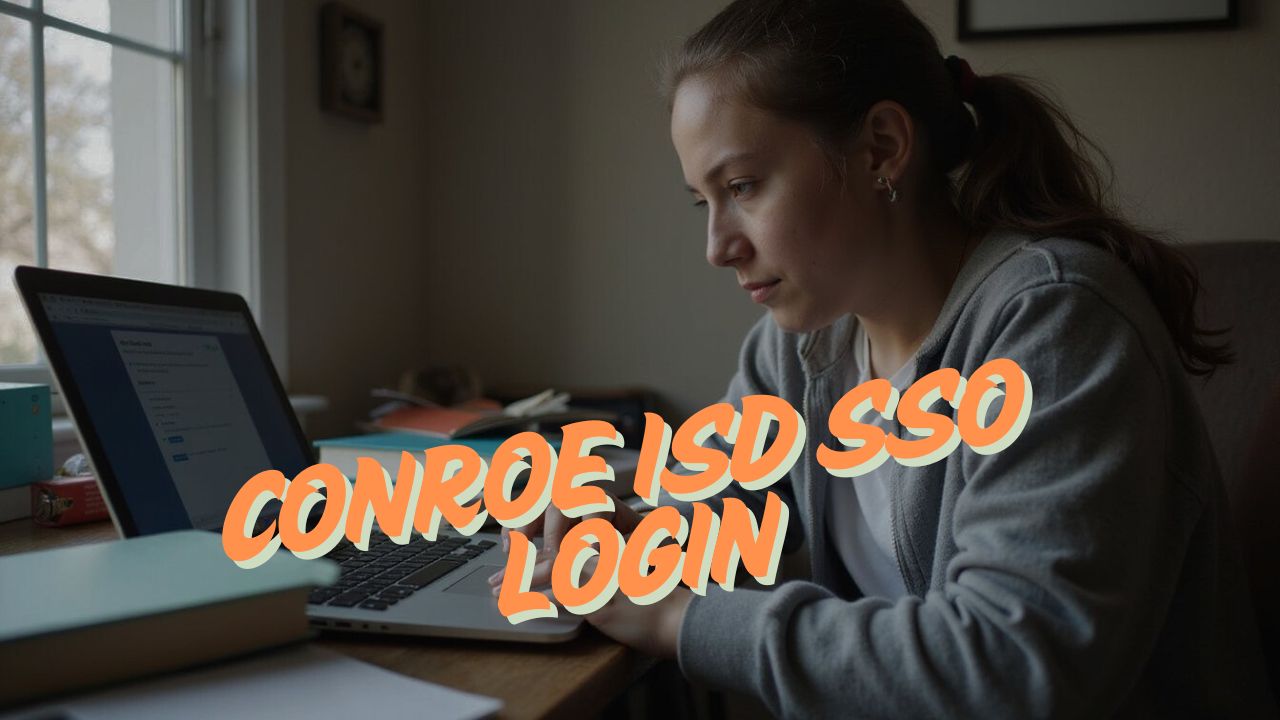Many drivers skip car insurance and fear the next traffic stop. In all states, driving without insurance can lead to fines and a license suspension. Here we will explain state minimum auto insurance coverage, show how to file proof of insurance with the DMV, and help you dodge high insurance premiums.
Keep reading.
Key Takeaways
- 49 states ban driving without insurance. Only New Hampshire lets you post proof after a crash. You may need an SR‑22 form.
- States fine uninsured drivers up to $5,000. California fines $100–$200 (total cost ~$400), New York up to $1,500 plus 15 days in jail, Texas up to $500 plus 90 days behind bars, Florida levies $150–$500 reinstatement fees.
- Police can tow and impound your car under financial responsibility laws. Nevada charges a $750 reinstatement fee. You lose registration and license until you pay fees and file proof.
- A coverage lapse can hike full coverage to $2,705 a year versus $752 for state‑minimum plans (10–11% higher). Insurers flag you as high‑risk and raise your premiums for years.
- A crash without insurance can leave you with $50,000+ in medical bills. Courts may freeze wages, place liens, or push you into bankruptcy over bodily injury and property damage liability.
Is It Legal to Drive Without Insurance?
Skipping auto insurance breaks state laws in 49 states. Officials treat uninsured drivers as high risk. Courts slap fines and hit your record. You risk registration suspension, license suspension at the department of motor vehicles.
New Hampshire stands alone. It does not demand minimum auto insurance coverage before you drive. It requires proof of financial responsibility after a crash. You might post a bond or file an SR‑22 form to cover medical bills, bodily injury liability, and property damage liability.
Consequences of Driving Without Insurance
Skipped liability insurance? That gap can burn a hole in your bank account and spark trouble at the department of motor vehicles. Read on to see how lacking proof of financial responsibility can land you in court.
Fines and Penalties
States can charge drivers more than $5,000 for driving without insurance. California sets fines at $100 to $200. Fees can push bills to about $400. New York issues up to $1,500 in fines.
Courts may add 15 days in jail. Officials can suspend a license for one year. Texas judges can fine up to $500. They may lock you up for 90 days. Florida halts vehicle registration until you pay a $150 fee for the first lapse.
Repeat violations cost $250 for the second and $500 for the third.
An SR22 form can restore your driver’s license. Motor vehicle departments demand proof of insurance. Insurance companies flag uninsured drivers as high-risk. Insurers may hike insurance premiums or cancel your policy.
Courts refer to financial responsibility law to enforce these rules. License suspension and registration suspension can follow.
License Suspension or Revocation
Missed coverage leads to license suspension. New York drivers face a one‑year ban after they drive without auto insurance. Florida rules drop driver’s licenses for up to three years in similar cases.
State offices, like the Division of Motor Vehicles, demand SR‑22 forms after a suspension to prove financial responsibility. Courts want proof of insurance to lift the ban. This filing marks drivers as high risk.
Insurers hike insurance premiums once they see this record.
Vehicle Impoundment
Driving without insurance triggers vehicle impoundment under state financial responsibility law. The Department of Motor Vehicles tows your car to a lot. You owe towing and daily storage fees.
Nevada charges a $750 reinstatement fee. You must show proof of insurance and pay all fines to get back your vehicle.
Unpaid fees worsen your financial stress. Storage adds up fast. The state can suspend your vehicle registration and hold your license plate. These legal penalties can push you toward debt or bankruptcy.
Future insurance premiums will spike once you reapply.
Increased Insurance Costs in the Future
A lapse in auto insurance can spark a steep rise in insurance premiums. Drivers turn to thezebra.com and online calculators to find cheaper auto insurance. A single missed payment can force drivers into nonstandard carriers.
These firms charge high-risk driver rates. Full coverage rates jump to $2,705 a year. State minimum coverage averages $752. That hike adds 10 to 11 percent over continuously insured costs.
High rates can stall car registration or trigger license suspension. Some states treat missed coverage like a traffic ticket or DUI. Uninsured motorists face registration suspension and legal penalties.
Underwriting rules in state laws penalize repeat offenses. Insurance agents warn that these bills can add to medical expenses or lawsuits. Financial responsibility laws steer claims toward drivers with valid proof.
What Happens If You Get Pulled Over Without Insurance?
Police pull you over and ask for proof of car insurance. Without that card you face a traffic ticket. Some fines top $5,000 in a single event. The officer can order a tow and impound your vehicle.
A court may force you to file an SR-22 form with the Department of Motor Vehicles. You can lose your driver’s license on the spot.
Insurance companies see you as high risk. They hike your premiums by hundreds each month. That mistake can hit your wallet harder than the fine. You might pay double or triple amounts for years.
A gap in coverage shows on your motor agency record. You must submit an SR-22 certificate and carry a valid policy to regain registration.
What Happens If You Cause an Accident Without Insurance?
You face medical bills and repair costs after a crash with no coverage. A claims adjuster files a claim, and you can land in court over bodily injury liability or property damage liability.
Financial Liability for Damages
A crash can leave you on the hook for thousands if you lack auto insurance. Medical bills often climb past $50,000 in serious personal injury cases. Courts cite financial responsibility law to make uninsured drivers cover property damage liability and bodily injury liability.
Insurance carriers then demand legal fees and unpaid medical expenses.
Mounting debt can push drivers into bankruptcy court. State’s department of motor vehicles may slap liens on wages or freeze bank accounts. Credit scores can tank, and insurance premiums might skyrocket for years.
Stress and anxiety follow every invoice, court summons, and repossession notice.
Potential Lawsuits
Juries often hit uninsured drivers with big bills for medical care.
Courts let injured motorists seek bodily injury liability and property damage compensation in civil suits.
Laws in California, Michigan and New Jersey block non‑economic awards if you break financial responsibility law.
Attorneys charge fees, and those rise fast when you lack personal injury protection.
Victims can demand payments for car repairs and lost wages.
Court cases may drag on for months, piling on legal fees.
Filing a claim after driving without insurance will leave you empty handed.
States enforce “no pay, no play” laws in California, Michigan, New Jersey to curb repeat offenses.
State-Specific Penalties for Driving Without Insurance
Each state sets its own rules under financial responsibility law, so you might face a driver’s license suspension in Texas or a registration suspension in California. Some states let you upload an insurance card photo through an online portal or SMS, while others demand certified mail.
Examples of Penalty Variations by State
Rules shift across state lines.
| State | Fine Range | Jail Time | License Action | Other Penalties |
|---|---|---|---|---|
| California | $100–$200 | None | None | Total cost around $400 |
| New York | Up to $1,500 | Up to 15 days | 1-year suspension | None |
| Texas | Up to $500 | Up to 90 days | None | None |
| Florida | None | None | Up to 3-year suspension | Reinstatement fees:
• $150 (1st) • $250 (2nd) • $500 (3rd) |
| Hawaii | First: $500
Repeat: $1,500–$5,000 |
None | None | Community service:
• 75–100 hrs (1st) • 200–275 hrs (repeat) |
| Massachusetts | $500–$5,000 | Up to 1 year | None | None |
| Michigan | $200–$500 | Possible jail | None | None |
| Nevada | $250–$1,000 | None | None | $750 reinstatement fee |
| Washington | At least $550 | None | None | None |
How to Get Insurance if You’re Currently Uninsured
Skip the guessing game: fire up a free quote tool online and spot your best liability coverage deal in minutes. Then call a local insurance agency and lock in a plan that meets your state’s minimum coverage law.
Research Insurance Providers
Pick a few insurers to call or check online. Review coverage choices for bodily injury liability and property damage liability. Nonstandard insurers serve high‑risk drivers, and they offer options with lenient rules.
Check that the insurer holds a license from Coverage.com, LLC (NPN: 19966249). Jot down quotes for premiums, and note what each plan covers.
Grab quotes from at least three insurance companies, and compare their auto insurance rates side by side. Note state laws on minimum auto insurance coverage, and follow driver’s license and vehicle registration rules.
Use proof of insurance apps or cards to meet legal requirements. Balance lower premiums against gaps in protection, or you might end up with a hole in your wallet. That way, you avoid a pricey fine for driving without insurance.
Compare Rates and Coverage Options
Drivers may save money by comparing premiums. A lapse may push full coverage costs to $2,705 a year, up by 10% from steady coverage. State minimum plans average $752 annually, they meet financial responsibility law.
Liability Coverage protects you if you hit another car. Collision Coverage handles crash repairs. Comprehensive Coverage guards against theft or hail. Personal Injury Protection covers medical bills.
Underinsured Motorist Coverage kicks in if another driver lacks enough insurance.
Online comparison platforms list quotes from several auto insurance providers, they use premium calculators. Rate charts vary by state laws on minimum auto insurance coverage. Smartphone apps let you tweak deductibles and limits, then see price changes.
Digital calculators help spot cheap car insurance deals. Sites also track insurance company ratings, you can check customer feedback.
Follow State Minimum Coverage Requirements
State laws demand at least $30,000 for bodily injury per person, $60,000 per crash, and $10,000 for property damage. Some jurisdictions layer on medical payments coverage and Personal Injury Protection.
You must show proof of insurance at vehicle registration, or face registration suspension or license suspension. Meeting minimum auto insurance coverage cuts legal penalties and keeps insurance premiums lower.
Can You Face Jail Time for Driving Without Insurance?
Drivers face more than a fine for driving without insurance. In New York, courts can levy a $1,500 penalty and lock violators up for fifteen days. Texas judges may bar you for ninety days behind bars.
Massachusetts law can send offenders away for a year. Michigan law also carries a brief jail term. CDL holders face stricter rules and extra penalties. Officers can demand proof of insurance at traffic stops.
Police cite violations under the financial responsibility law. Courts may impose registration suspension or enact license suspension.
Such a record can slam your insurance premiums. High‑risk driver status can raise car insurance rates for years. A traffic infraction can harm your credit and block lines of credit, a mortgage, or a HELOC.
Courts may also impose vehicle impoundment. A defensive driving course and proof of minimum auto insurance coverage can help. Shop through comparison sites or insurance agencies to find cheap coverage and avoid jail time.
Tips to Avoid Driving Without Insurance
Keep your proof of insurance tucked with your driver’s license, set auto‑pay on your credit card, and scout cheap car insurance to dodge fines—read on for more.
Always Carry Proof of Insurance
Tuck an auto insurance card into your glove box, wallet, or sun visor. Officers compare it to your vehicle registration and state records. Showing proof can stop a fine from hitting your bank account.
State financial responsibility law often carries a $100 to $500 penalty for first offenses.
Snap a photo of your card with a mobile app, so you never dig through crumpled papers. You might dodge a license suspension or a car impoundment if you show digital proof. Some state laws even accept electronic versions on phones.
That little image can save you from high-priced tickets, higher insurance premiums, and a bruised record.
Set Up Automatic Payments to Avoid Lapses
Late auto insurance bills can lead to a registration suspension or a license suspension, even a fine. An uninsured driver can face high financial responsibility and rising insurance premiums.
Use auto pay with a checking account or a credit card. Set it up in your insurer’s online portal. That step keeps auto insurance active.
John missed a due date once. The state flagged his driver’s license in days. He paid a new lump sum fee to restore coverage. He added auto pay to dodge future lapses. His proof of insurance stays valid month after month.
Regularly Review Your Policy
Review your auto insurance policy twice a year. Log into your insurance website or call your agent. Check your bodily injury liability and property damage liability limits. Confirm you meet state laws on minimum auto insurance coverage.
Adjust your premiums after moves or when you add a car. Track updates in financial responsibility law. Present your proof of insurance at any Department of Motor Vehicles visit. This step cuts risk of registration suspension, license suspension, and spikes in insurance premiums.
Takeaways
Driving uninsured can cost more than a few bucks. You risk license suspension, vehicle registration holds, and higher insurance premiums. State laws vary, so check local minimum coverage for bodily injury liability and property damage liability.
Tools like Bankrate let you compare quotes fast, helping you meet financial responsibility law. Guard your driver license, avoid medical bills, and steer clear of legal penalties.
FAQs
1. What happens if I drive without auto insurance?
Driving without insurance brings legal penalties, heavy fines, and risk of license suspension, on top of registration suspension. Each state law fights uninsured drivers, and repeat offenses stack on steep fees.
2. How will going uninsured affect my insurance premiums?
Auto insurers tag you a high‑risk driver after a lapse, so your next insurance premiums jump sky‑high. You may hunt cheap car insurance but face large bills because of policy cancellation.
3. What minimum auto insurance coverage does the law require?
State laws set the least cover you need, like injury liability and damage liability, under financial responsibility law. You must show proof of insurance when you renew vehicle registration.
4. Can police suspend my vehicle registration or driver license for no proof of insurance?
Yes, officers can pull your plates, halt vehicle registration, and take your driver license until you show valid proof of insurance. Registration suspension often leads to more hoops to jump through.
5. What if I cause a car accident while uninsured?
You still owe medical bills and pay for crash damage. Courts can fine you under penalties for driving without insurance, or file a lien on your line of credit. You may even pick up a mark on your criminal record.
6. How do I find affordable auto insurance after a suspension?
You can shop rates on sites like The Zebra, compare quotes, and get a fact‑checked policy. Look for a cheap auto insurance deal that meets state laws, and covers seat belt injuries.






































